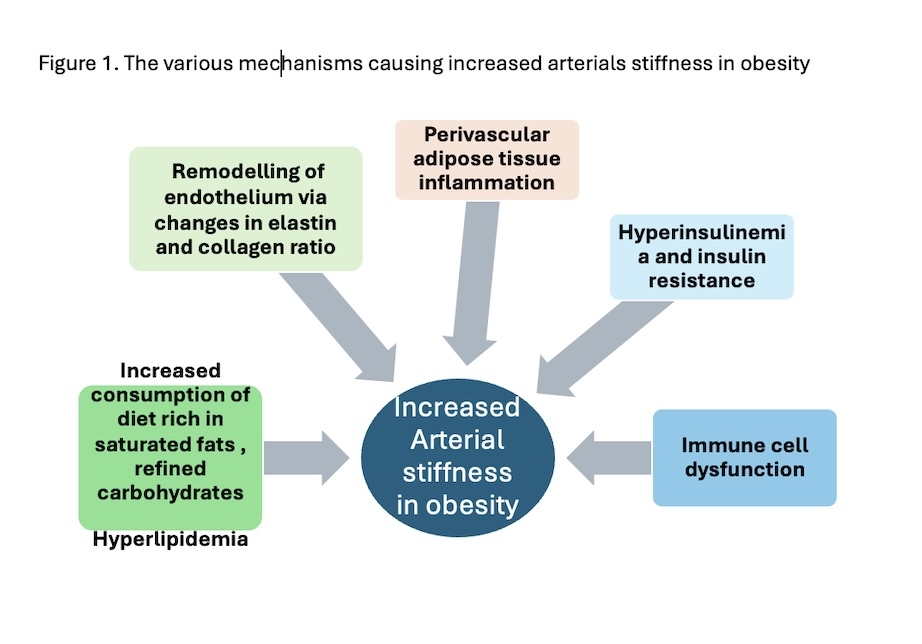Introduction: Obesity is a multi-factorial disorder defined as abnormally high levels of body fat accumulation. It is a major emerging pandemic of this century which can be attributed to alterations in eating habits, lifestyle choices and rise in sedentary behaviour. The activation of pro-inflammatory signalling pathways linked to obesity can result in vascular endothelial dysfunction and changed levels of Nitric oxide(NO). Hyperlipidaemia may exacerbate arterial stiffness which is a precursor to atherosclerosis. In this study, we tried to evaluate the changes in levels of nitric oxide in obese individuals and its association with arterial stiffness.
Objectives: To identify the association of serum levels of Nitric oxide metabolites with Body Mass Index(BMI) in apparently healthy subjects.
2. To evaluate any correlation between serum nitric oxide metabolites, BMI and arterial stiffness in obese individuals.
Methodology: The study was conducted after obtaining Institutional Ethical committee(IEC) approval on 120 adults in the age group of 20 -40 yrs, non-smokers having sedentary working habits who are apparently healthy.The weight and height of all the study participants were measured according to standard protocols. Body mass index (BMI) was calculated as weight divided by square of height(h2). The subjects were divided into three groups depending on their BMI as follows: Group I: BMI 18.5 to 22.9 (controls)(n=40), GROUP II: BMI 23 to 29.9 (overweight and pre-obese subjects) (n=40) and Group III: BMI 30 and above (obese subjects) (n=40)(Asian classification of BMI). Fasting venous blood samples were collected and Serum NOx concentration were measured by the nitrite, nitrate assay kit which determines the levels of NO metabolites (total nitrite and nitrate) using GREISS reaction method and absorbance read at 540nm. Serum lipids and triglycerides were measured using enzymatic colorimetric method with glycerol phosphate oxidase and serum cholesterol levels were estimated using standard kits. Arterial stiffness of the participants was measured using an oscillometric non-invasive arteriography for cardiovascular risk assessment.
Result: The results showed a significant increase in systolic blood pressure (p<0.001) and no change in diastolic blood pressure and significant increase in pulse pressure(p<0.001) with increase in visceral adiposity (Waist Circumference) more than BMI. Results of Pearson correlation indicated that there is a significant small negative relationship between BMI and Serum NO levels , (r =- 0.534, p < .001). There was significant increase in Brachial ankle Pulse Wave Velocity (Ba PWV) (p=0.001) and Carotid Femoral Pulse Wave Velocity (CF PWV) (p=0.01) in obese subjects when compared to controls.
Conclusion: Our study results showed that abdominal obesity more than overall obesity is more strongly associated with decreased serum NO levels and Increased arterial stiffness. In obese individuals, increased arterial stiffness as reflected by increased pulse wave velocity may contribute to predicting cardiovascular disease in both genders in addition to development of hypertension.

